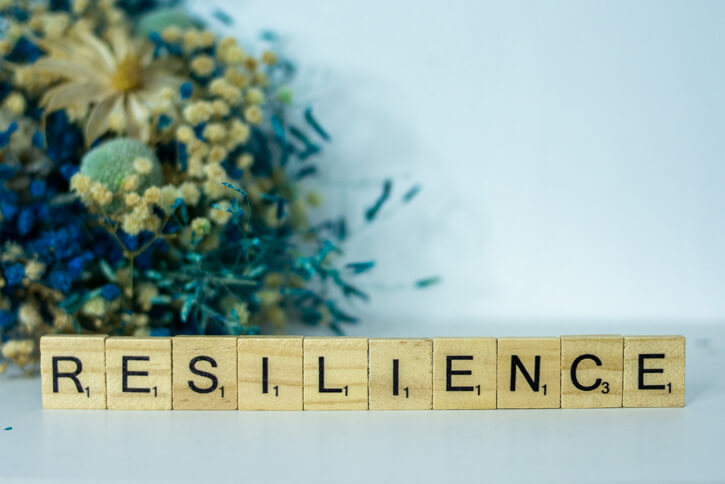Change causes stress, and stress is by its nature disruptive. Since we can’t avoid change, we can’t avoid the physical, emotional, and interpersonal consequences that accompany it.
Most of us have been conditioned to look at stress as something harmful—a state of affairs to be minimized and managed with as much equanimity as we can muster.
Unfortunately, this point of view is not only quite limited; it is also frequently incorrect and can set us up to be less able to deal with what is happening.
Nature has a law that many of us are unaware of. I call it the law of disruption and reintegration. What it involves is a mandate to fall apart when confronted with significant change so as to be prepared to create a new coherence afterward. In other words, when change occurs—when one set of circumstances gives way to another in the interests of growth, maturation, adaptation, or simple necessity—we must know how to recognize and move with the emotional distress and confusion that ensue, and how to gently piece together the fundamentals of our lives in a newer, more meaningful form.
Can we predict when such significant periods of stress and change will appear in our lives? To some degree, yes—many are built into the normal human life cycle: reaching adolescence, graduating from school, getting married, having children, arriving at middle age, retiring, getting old.
I recently had dinner with friends who were puzzled and frightened by these consequences. Nearing their sixties, they were about to move to a condominium they had purchased in the North Carolina mountains. The husband, a writer, was nervous lest living in a strange locale might induce a creative block. He looked to me for some reassurance. His wife had not slept well for a month. Although she had originally grown up near the place to which they were moving, she had lived in New York for more than thirty years and anticipated the change with considerable, though seemingly unreasonable, apprehension.
The best reassurance I could offer them was that they were supposed to be upset under the circumstances. If they had enough resilience, they would adjust to their new living situation very well.
Of course, certain profound changes appear quite unpredictably. They can occur at any time to anyone. In the lives of most people (except perhaps for fortune’s few darlings), at least one major adversity can be anticipated in the course of a lifetime: illness, the death of a child, career reverses, divorce.
A forty-three-year-old doctor brought a similar, although far more devastating, condition of change to my attention. His wife of twenty years had abruptly left home, running off to live with his best friend and telling him that he could take care of the children. All she wanted, she said, was a legal divorce. When he tried to find out what had gone wrong between them, she simply informed him that marrying him had been a mistake in the first place, that she had never really loved him, and that was all she would discuss.
The doctor had become so distressed that he had considered taking a large bottle of sleeping pills to kill himself. He had lost twenty pounds in three weeks. His practice had been temporarily turned over to one of his colleagues until he could regain some measure of control over himself.
Again, the most reassuring thing I could say to him was that he should be as distressed as he was. He had been betrayed. He was abandoned. He must be questioning his own sensitivity and sense of reality—indeed, as she had said, his wife had never loved him from the outset. Nor could he be entirely without some blame in the matter, if for nothing more than having failed to perceive his wife’s lack of caring.
In both situations, my reassurance as to the right to be seriously upset relieved some of the fear and much of the confusion my friends and this doctor were experiencing. Restoring morale and giving people a sense of being somewhat back in command of themselves is often the first step to reintegration—or cure, as the case may be.
My use of the term “resilience” prompted each to ask exactly what I meant by that.
Resilience is not just another buzzword. It’s a complex set of physical and psychological strengths we all need to weather change.
Being resilient may have been a luxury in the past. Nowadays, it has become a necessity. For we live in a world in which change occurs at a frighteningly accelerated rate, and one in which the traditional structures of family and community that once buffered the impact of change are themselves going through their own time of chaos.
Some people who lack resilience may give the appearance of being strong—failing to experience or demonstrate the disruptive emotional consequences of stress. But such appearances are misleading, since they will probably grow more inflexible and less adaptive as time goes by. Often, they end up inflicting suffering on others to avoid feeling their own pain.
Others may collapse appropriately but not possess the resilience to put the pieces of themselves and their lives together again. Thus, they may languish in an enduring state of unhappiness and disability.
What are the ingredients that make up the resilient personality?
- Courage
- A purpose in life
- Integrity
- Open-mindedness
- A healthy self-esteem tempered with humility and a sense of humor enabling us to regain it when events temporarily rob us of self-regard
- A willingness to dream
- Discipline and a keen sense of responsibility
- The willingness to think and act independently, yet not be afraid to rely on others when appropriate or necessary
- A high tolerance for distress and uncertainty
- A set of values and a philosophy of life that provide meaning and hope, even at life’s seemingly most hopeless moments
- A network of friends
- The creation of environments—at home, in classrooms, in government and business—that facilitate rather than impede the evolution and exercise of our resilience
These ingredients that make up resilience are not terribly surprising. What is surprising is how little real attention has been paid to them.
Can we learn to be resilient?
Unfortunately, we have little influence over the forces that promote or limit the growth of resilience during childhood. Hopefully, our parents and teachers have valued it and tried to help us become so.
Interestingly, researchers have observed that some children can discover resilience in spite of growing up under the most adverse circumstances. As we become adults, however, we can begin to acquire it on our own—if we know where and how to look.
The poet Alfred Lord Tennyson, in his poem Ulysses, wrote that “All experience is an arch”—and indeed it is. With each new significant period of change and the psychological and interpersonal disruption that accompanies it, we will be presented with new opportunities to become more resilient and better prepared to meet the challenges that still lie ahead.

Frederic F. Flach, MD, KCHS, was an internationally recognized psychiatrist and author whose highly acclaimed books include Putting the Pieces Together Again; A New Marriage, A New Life; Resilience; Rickie; Choices; The Secret Strength of Angels; Faith, Healing and Miracles; and The Secret Strength of Depression. He graduated from Cornell University Medical College where he served as Adjunct Associate Professor of Psychiatry. He was an attending psychiatrist at the Payne Whitney Clinic and at St. Vincent’s Hospital and Medical Center.



